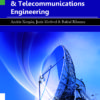Growing populations and industrializing countries create huge needs for electrical energy. Unfortunately, electricity is not always used in the same place that it is produced, meaning long-distance transmission lines and distribution systems are necessary. But transmitting electricity over distance and via networks involves energy loss. Distribution systems serve as the link from the distribution substation to the customer. This system provides the safe and reliable transfer of electric energy to various customers throughout the service territory.
Electric energy storage is poised to become an important element of the electricity infrastructure of the future. Proven storage technologies are in use today, while emerging storage technologies are expected to have improved performance and/or lower cost. In fact, recent improvements in energy storage and power electronics technologies, coupled with changes in the electricity marketplace, indicate an era of expanding opportunity for electricity storage as a cost-effective electric energy resource.
Electricity Transmission, Distribution and Storage Systems brings together state-of-art reviews of the materials, design and performance of electricity transmission and distribution networks, and the solicitation and combination of electricity storage systems. It reveals on the major components of the electricity distribution system – the distribution network, substations, and associated electrical equipment and controls – and how incorporating automated distribution management systems, devices, and controls into the system can create a “smart grid” capable of handling the integration of large amounts of distributed (decentralized) generation of sustainable, renewable energy sources. It covers the innovative techniques transmission and distribution issues facing electricity networks.
This guide provides readers with a high-level understanding of important bases for electric utility-related business opportunities involving electric energy storage. This guide is also intended to give readers a basic understanding of the benefits for electric-utility-related uses of energy storage. It will be of valued for the benefit of colleagues in the power industry, researchers, and graduate or senior undergraduate students.













